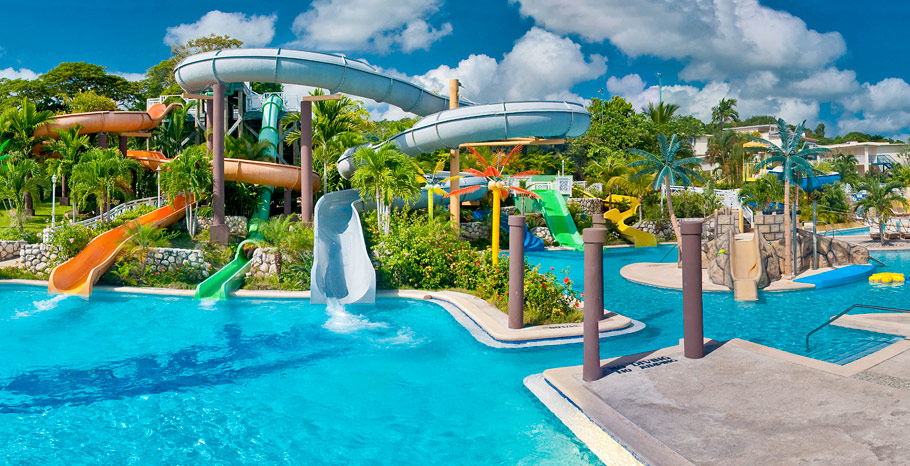Perspective: The Economic Impact of All-Inclusive Resorts in Jamaica
There are some 21,454 all-inclusive hotel rooms in Jamaica generating an estimated US$4.0 billion in gross income annually. “Jamaica’s primary tourism product, have many hidden negative consequences and provide limited local economic benefits. Ironically, the Jamaican government runs into debt as they welcome visitors for all-inclusive resorts. Moreover, spending an enormous amount of money on infrastructure may reduce government investment in other critical areas such as education and health. Hence, building infrastructure does not always help to improve the quality of local Jamaicans’ lives, but rather has unfavorable economic effects on the country.
At the same time, there is considerable scope for all-inclusive resorts in Jamaica to improve the benefits to local communities, and increase the money generation into the economy. In fact, according to Hawkes and Kwortnik (2006), locals, governments and other hospitality organizations put a great deal of pressure on Jamaica’s all-inclusive resorts to coexist with local communities.
Promoting and selling tours of the community by local people or employing qualified local persons wherever possible helps the resorts to be involved in community contribution and ease the pressure. Slowly this is beginning to happen, and all-inclusive resorts will find a way to stay in Jamaica with a new vision of sustainability and community contribution.”
A comprehensive plan or strategic growth plan would involve all stakeholders in which firm commitment could be negotiated to impose a development charge to upgrade water and wastewater infrastructure. Provide social services to local communities and creating greater linkages into the Jamaican economy with the hotel industry. At both ends of the spectrum, every single day thousands of gallons of untreated wastewater and tons of garbage are washed out to sea from all major cities and towns in Jamaica. This is not sustainable.
Planning is multi-faceted function just reporting growth and not affecting the fiscal and monetary policies makes the planning institute ineffective. How strategic plans like the Vision 2030 gets implemented shows the weakness in this agency. The strategic plan must be driven by specific action plans including a regional and local plans for development addressing the question of population growth, land uses and how each is interconnected by way of linear infrastructures, road, and utilities. So development planning must have a spatial component to solving the problem of where and how growth should impact the physical environment.
If we were to record successive years of 5% growth rate what would this look like in terms of employment, what are the industries being impacted and where will they be located relative to where people live. For growth to be meaningful it must be orderly and hence a strategic land use and infrastructure plan are needed to avoid what happened with Caymans estate the most suited site for a new reservoir has a housing scheme built on it. These major land use decisions must be planned some 20 years in advance.
“The Downtown area of Montego Bay, Jamaica needs a special strategy for its comprehensive upgrade. Our intention at the Emerging and Sustainable Cities Initiative is to find specific and adequate, multi-dimensional solutions, which transforms Montego Bay into a more livable place, less informal, less cruel and more inclusionary, also spatially inclusionary including the beautiful shoreline into the urban fabric and capitalize all natural assets of the city, and converting the difficulties into opportunities for all Montigoneans. Montego Bay is a paradise and needs little investment to be truly appreciated by all people, tourists and the locals.”
With an urban population of just over 2 million people, the Jamaican government will need to spend some US$35 billion over the next 15 years to renew its urban infrastructures to be able to accomplish the goals set out in the vision 2030 plan. This would include water, waste-water treatment plants, roads, public buildings, bridges, railroad and commuter rail and transit networks, affordable housing in mixed-income communities, sewer, dams and reservoirs.
The true potential of the National Housing Trust (NHT) could be realized to achieve significant sustainable social and economic infrastructure development. The NHT could be repurposed to focus on becoming the leading funding source for an integrated growth management plan through various partnerships to facilitate transportation focused urban development. This would mean creating more mixed income and mixed-used development within the inner cities of Kingston, Spanish Town, Mandeville, Montego Bay and May Pen.
The concept will serve to drive transportation focused urban development through increased urban densities as part of a strategic urban development initiative to concentrate up to two-thirds (2/3) of the Jamaican population in the five major urban centres guided by an integrated Growth Management Plan. At the core of this Sustainable Development Initiative (SDI) is the development of a modern commuter rail system linking these urban centres.
The objective is to protect our major watersheds and environment from uncontrolled development and at the same time saving billions of dollars in infrastructure spending by focusing on the renewal of current old and existing infrastructure instead of building new ones while creating thousands of good paying jobs for the youths and growth in the economy.
By: Silbert Barrett




